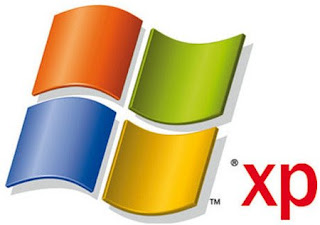
@SPEED UP BROWSING WITH DNS CATCH:
When you connect to a web site your computer sends information back and forth, this is obvious. Some of this information deals with resolving the site name to an IP address, the stuff that tcp/ip really deals with, not words. This is DNS information and is used so that you will not need to ask
for the site location each and every time you visit the site. Although WinXP and win2000 has a pretty efficient DNS cache, you can increase its
overall performance by increasing its size. You can do this with the registry entries below:
*****************************************
Windows Registry Editor Version 5.00
[HKEY_LOCAL_MACHINE\SYSTEM\CurrentControlSet\Services\
Dnscache\Parameters]
"CacheHashTableBucketSize"=dword:00000001
"CacheHashTableSize"=dword:00000180
"MaxCacheEntryTtlLimit"=dword:0000fa00
"MaxSOACacheEntryTtlLimit"=dword:0000012d
*****************************************
1. Make a new text file and rename it to dnscache.reg.
2. Then copy and paste the above into it and save it.
3. Then merge it into the registry by double clicking on dnscache.reg
@SPEED UP DETAILED VIEW IN WINDOWS EXPLORER:
If you like to view your files in Windows Explorer using the "Details" view here is a tweak to speed up the listing of file attributes: Viewing files in
Windows Explorer using the "Details" mode shows various attributes associated with each file shown. Some of these must be retrieved from the individual files when you click on the directory for viewing. For a directory with numerous and relatively large files (such as a folder in which one stores media, eg: *.mp3's, *.avi's etc.)
Windows Explorer lags as it reads through each one. Here's how to disable viewing of unwanted attributes and speed up file browsing:
1. Open Windows Explorer
2. Navigate to the folder which you wish to optimize.
3. In "Details" mode right click the bar at the top which displays the names of the attribute columns.
4. Uncheck any that are unwanted/unneeded.
Explorer will apply your preferences immediately, and longs lists of unnecessary attributes will not be displayed.
Likewise, one may choose to display any information which is regarded as needed, getting more out of Explorer.
@DELETING My eBooks AND SPECIALS FOLDER IN MY DOCUMENTS:
1. Click Start
2.Go to Run and type: regsvr32 /u mydocs.dll
3. Now delete them.
@ADMINISTRATOR IN WELCOME SCREEN:
When you install Windows XP an Administrator Account is created (you are asked to supply an administrator password), but the "Welcome Screen" does not give you the option to log on as Administrator unless you boot up in Safe Mode.
First you must ensure that the Administrator Account is enabled:
1. open Control Panel
2. open Administrative Tools
3. open Local Security Policy
4. expand Local Policies
5. click on Security Options
6. ensure that Accounts: Administrator account status is enabled.
Then follow the instructions below
1. open Control Panel
2. open User Accounts
3. click Change the way users log on or log off
4. untick Use the Welcome Screen
5. click Apply Options
You will now be able to log on to Windows XP as Administrator in Normal Mode.
@OUTLOOK EXPRESS WINDOWS TITLE TWEAKS:
Change the window title of Outlook Express to anything you want!
In regedt32 and navigate to HKEY_CURRENT_USER\Identities\{EE383506-901D-43C6-8E40-9A61901DF7CC}\
Software\Microsoft\Outlook
Express\5.0. Add a new string key called WindowTitle and make its value the desired window title. Then close the registry editor, and restart
Outlook Express (if it's running.) Your new title now shows up in the title bar!
@CHANGING THE WINDOWS MEDIA PLAYER TITLEBAR:
This is a per-user tweak.
1. Open RegEdit.
2. Browse to the following key:
HKEY_USERS\S-1-5-21-xxxxxxxxx-xxxxxxxxx-xxxxxxxxxx-xxxx\
Software\Policies\Microsoft\WindowsMediaPlayer(the x's will vary from computer to computer, it's the key without the "_Classes" at the end)
3. Create the following String, "TitleBar" , the value of this will now become the TitleBar of Windows Media Player.
@TURN OFF INDEXING TO SPEED UP XP:
Windows XP keeps a record of all files on the hard disk so when you do a search on the hard drive it is faster. There is a downside to this and because the computer has to index all files, it will slow down normal file commands like open, close, etc. If you do not do a whole lot of searches on your hard drive then I suggest turning this feature off:
1. Control Panel
2. Administrative Tools
3. Services
4. Disable Indexing Services
Enjoy, Fast Browsing!!!!!!!!!!
@SPEED UP BOOT BY DISABLING UNUSED PORTS:
You may have tried many tweaks like modifying windowsXP start-up applications, prefetches, unload DLLs method,etc. And yes those methods do work for me.
I have just accidentally found out another way to give you an extra boost in windows XP's boot performance. This is done by disabling your unused devices in Device Manager. for example, if you don't have input devices that are connected to one of your USBs or COM ports, disabling them will give you an extra performance boost in booting.
Go to Control Panel -> System -> Hardware tab -> device manager
Disable devices that you don't use for your PC and then restart.
@CD ROM STOPS AUTOPLAYING/AUTORUN:
If the AutoPlay Tab has disappeared in My Computer, Devices With Removable Storage, Right Click on CDROM, Properties, Autoplay,Choose a appropriate action for yourself.
Now, Go to Control Panel, Administrative Tools, Services. The service: "Shell Hardware Detection" has been set to Manual or Disabled.
Return this service to "Automatic".
Saturday, December 20, 2008
Tips And Tricks, Windows XP - Part 2
Subscribe to:
Post Comments (Atom)





No comments:
Post a Comment